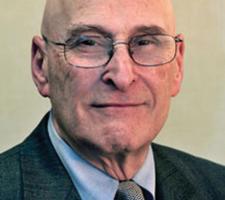
In future the connected vehicle will connect drivers to the wider road network including safety and mobility systems
It is now 20 years since publication of the Strategic Plan for Intelligent Vehicle Highway Systems. A select group of luminary figures of the ITS industry give their assessment of progress to date
This year the IVHS Strategic Plan turns 20, signaling the graduation of the field of Intelligent Transportation Systems from its tumultuous teens to young adulthood. After two decades tethered by the cords of youth and protected by the strict control of adult institutions, ITS has reached a turning point. Its youthful cords cut, the industry is now free to roam, associate with other industries, adapt and grow.Much has changed since the Strategic Plan was published by IVHS America (now
Free and untethered
In 1992, for all practical purposes, the Internet did not exist in the ITS sector. In 2012, we not only have the Internet, we have wireless, personal Internet and plenty of bandwidth. Wireless communications coupled with the advent of smartphones have radically altered the scope and capabilities envisioned for advanced systems of traveler information, traffic management, public transportation and safety. We have gone from exclusively roadside infrastructure to employing autonomous in-vehicle devices and probes while reducing costs, vastly increasing service coverage and improving the volume, type and usefulness of information for travelers. On the safety side, autonomous systems have led to crash avoidance technology like adaptive cruise control, forward collision mitigation, blind spot information systems, traffic sign recognition, and lane-keeping aids.In light of the transformation in connectivity among individuals and vehicles, the predictions of the authors of the Strategic Plan were amazingly accurate: nearly all of the services originally envisioned are coming to fruition. However, the vision of how to build ITS has changed.
The original vision was stifled as initial capital expenditures for roadside infrastructure slowed in reaction to the often unanticipated high operational expenditures incurred by local and regional road authorities. A ubiquitous roadside infrastructure of gantries, beacons, loops, cameras, cabinets and cables has been replaced by a vision of highly decentralized devices and vehicles connected via wireless communications and cloud computing – the ‘connected’ car as the core source of speed, volume, and density data.
ITS is no longer seen as largely physical infrastructure that is costly to operate and maintain, complementary to roads and transit systems. Instead, ITS is increasingly seen as a collection of services offered by both public and private sector stakeholders over a decentralized network of hyper-connected (multiple connections as opposed to simply one-to-one) devices, people and vehicles.
Feeding big data
The maturing ITS industry is hungry for data—vast quantities of it. Smartphones and other devices have exploded the amount of traffic data available for the ITS sector to collect, analyze and disseminate.While data was central to early thinking about ITS, the original plan did not anticipate the quantity and diversity of data available today. The infrastructure to collect, manage, analyze and distribute it is now an industry unto itself, led largely by the private sector. We are just beginning to scratch the surface of the possibilities for these data sources to provide valuable tools and services for operations, traffic safety, planning and research.
If the last great technological leap forward was the combination of wireless and smartphones, then the next leap forward for ITS will be the exploration and discovery of more powerful tools and analyses to build intelligence from the data being generated. The advent of predictive services will likely define the next 20 years of ITS deployment, from predictive safety applications to services based on predictions of congestion and travel behavior.
For example, vehicle to vehicle communications will provide data about what other vehicles in the pack are doing, such as sharply breaking to avoid an animal in the roadway. The ‘connected vehicle’ will connect the driver to the wider area road network, including safety and mobility systems, by providing information on area-wide road hazards, congestion, road works, or traffic problems.
It will also connect the vehicle to other modes of travel such as park-and-ride, bus and train information. All will be delivered via wireless networks to vehicle displays or tethered smartphone using Bluetooth or USB connector, augmented by vehicle sub-systems.
Remaking the world around ITS
Like the teenager rebelling against parental controls, ITS is undergoing a makeover in its organizations and institutions. A new suite of players has emerged, especially from the high-tech private sector and a different set of policy issues, including security, privacy and data ownership, is consuming the attention of bodies driving ITS.The public sector has been reshaped as well. In the US, states are now conduits for ITS rather than the primary drivers of its deployment. Under the leadership of the ITS Joint Program Office, the Federal government has successfully integrated ITS as a complement to its traditional mission and flexibly accommodated rapidly changing technologies, challenges and needs.
The institutional makeover surrounding ITS can be traced largely to the technological changes described above. The ‘rise and fall’ of gadgets (from corded phones to fax machines and cellular phones to smartphones) has led to more personal and connected services in the telecommunications, entertainment and retail sectors. ITS is now able to exploit these networks to deliver the benefits envisioned of ITS in a personalized way.
Perhaps the most interesting institutional transformation seen since the Strategic Plan is the notion that ITS, the ‘new kid on the block’, will deliver a key technology-based source of revenue. As the Highway Trust Fund continues to decline, it may be ITS, through distance-based road user charging, for example, that will create the sustainable cash flow needed for road construction, operations and maintenance.
Putting the Costumer in Charge
Management expert Henry Mintzberg labeled the term ‘strategic planning’ an oxymoron. He might have chuckled at the team of transportation industry leaders who assembled to craft the Strategic Plan in 1992 and perhaps even condemned their efforts to failure. But taking the plan’s core elements – its vision, objectives, recommendations for allocation of resources and its prescription of key actions to be taken – even the harshest critic would have to conclude that the document has proven not only an accurate predictor but also a valuable guide for industry.The plan outlined nearly the full range of ITS services that is now available. It defined clear roles for government, industry and academia that have largely been fulfilled. It suggested deployment approaches and programs that have proven catalysts for broad adoption of ITS. For example, in the case of traffic information, we have gone full circle, from the original vision of private sector provision, to the early 2000s proclamation that “there is no market for traffic information”, to its modern thriving market.
The plan missed some key developments and trends that have radically changed how we view ITS and its deployment. Chief among them was the explosion of wireless communications technologies, the Internet and data availability. However, one cannot sit in judgment of the plan on the basis of its ability or lack thereof to predict the future, but rather on its ability to prescribe a useful trajectory. By that standard, the document remains important and instructive. Moreover, the Strategic Plan compares favorably against a backdrop of notable events and facts of its time.
Still, the trajectory has changed since 1992. The technologies envisioned in the Strategic Plan are becoming increasingly decentralized and wireless. As a result, where the plan envisioned institutions (e.g road authorities) driving the deployment of ITS, it is clear that the consumer is now in the driving seat. And with consumers in control, ITS has become like many other industries: it’s almost all grown up.
An important question remains: is another strategic plan, or an update, necessary? Perhaps the market forces now driving ITS, as in other mature industries, are sufficient. On the other hand, a new strategy may help to guide growth for the next 20 years.
Regardless, thanks in large measure to the original Strategic Plan, it cannot be denied that ITS is a firmly established, healthy, contributing sector, one of the key new ‘bread winners’ for the development and sustainability of transportation infrastructure for the next 20 years and beyond.
Our Authors:
- Joseph Sussman is the JR East Professor of Civil & Environmental Engineering and Engineering Systems at MIT. Professor Sussman was a key author of the 1992 IVHS Strategic Plan and recently served as the Chairperson of the ITS Program Advisory Committee for the US Congress.
- Jack Opiola is Managing Partner and Senior Vice President of
6219 D’Artagnan Consulting. Jack has over 35 years of international experience in ITS and the transportation industry. He leads the partnership’s strategic program planning and implementation consultancy for road user charging and ITS systems.
- Steve Morello is a Senior Partner in D’Artagnan Consulting He has more than 20 years of ITS experience (research, policy development, and implementation) including 10 years consulting and assisting with road user charging systems.
- Matthew Dorfman is a Partner in D’Artagnan Consulting. He has over 10 years of experience in the design, implementation and testing of road user fee, ITS and toll collection systems.
- Travis Dunn is a Partner in D’Artagnan Consulting. He has nine years of experience in the transportation sector as a researcher and consultant in the areas of road pricing and ITS policy development and analysis.
Also in 1992:
• The•
• Less than 0.3% of Americans have Internet access.
• Less than 0.5% of Americans have mobile phones.
• Highway crashes kill over 44,000 Americans.
• 70% of urban Interstate highway miles are congested during peak hours.














